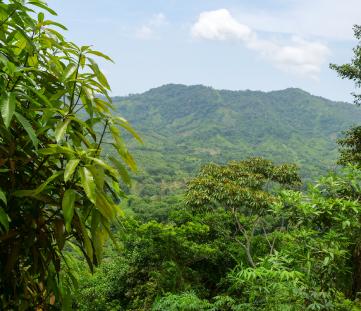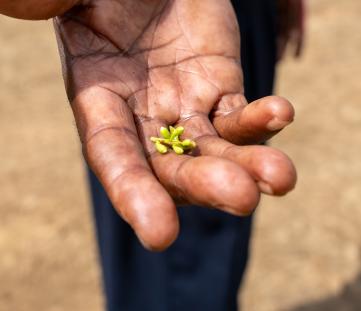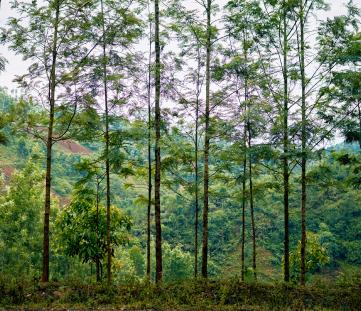ID: 8WY-ZL3V
ID: 8WY-ZL3V
Jacaranda
Jacaranda mimosifolia
Photo
Tanzania
16:49 - 21°C
My connections
My ID card
Who am I?
Date of birth
06/27/2024
Name
Jacaranda
Tree
Jacaranda
Where am I located?
Country
Tanzania
Place of birth
Meru
Coordinates
3° 8′ 55.89″ S
36° 53′ 2.89″ E
/36.88413491,-3.14885783,0/500x333@2x?access_token=pk.eyJ1IjoidG9tbWFzb3NwZXJvbmkiLCJhIjoiY2tnOTE3eW12MDJqazMybXNzOWV1YjloOSJ9.wtGsuDU7XIKjcv2cq8CiXw&logo=false&attribution=false)
My Timeline
The important moments in your tree's life.
Seed
It all starts with a tiny seed, nice and warm in the soil.
Nursery
Your seedling is big enough to be welcomed into one of our nurseries, along with many others.
Planted
We’re here! Your tree has reached its new home: it’s been planted by a smallholder, who’ll take care of it for years to come.
Photo
Strike a pose! Now that it’s big enough, here’s a photo of your tree!
My Gallery
Nursery

Planted
/36.88413491,-3.14885783,0/500x333@2x?access_token=pk.eyJ1IjoidG9tbWFzb3NwZXJvbmkiLCJhIjoiY2tnOTE3eW12MDJqazMybXNzOWV1YjloOSJ9.wtGsuDU7XIKjcv2cq8CiXw&logo=false&attribution=false)
36° 53′ 2.89″ E
Photo

Curiosity about me
The important moments in your tree's life.
Let's start with introductions
The scientific name of this tree is Jacaranda mimosifolia. It’s known by numerous common names, including Blue Jacaranda and Nupur. For the sake of convenience, we’ll simply call it Jacaranda. It’s a tree that can grow up to 20 metres in height and is at home in many tropical regions. Native to South America, it’s now found in many parts of the world. It’s often used as an ornamental tree. Its beautiful, striking flowers produce small, reddish-brown capsule-shaped fruit. As part of an agroforestry project, Jacaranda provides shade and is often planted as a windbreak.
Meaning
Attention
With its bold pink flowers, Jacaranda is a real beauty! It’s guaranteed to grab your attention!

How much CO2 I’ll absorb
My estimated CO2 absorption capacity is based on the first 10 years of my life*
Current absorption
- 0 kg
2024
0 kg
2034
-700 kg
* The tree will continue to absorb CO2 even after the tenth year. Therefore this is a prudent estimate.
How I am useful to local communities

Anti-wind
It protects young plants from the wind and reduces water evaporation from the soil.

Medicine
Its leaves, roots, bark and/or fruits are used in traditional medicine.

Fence
It provides protection for crops and shade for livestock.
My benefits
50%
Food Security
The trees will bear fruits, some that will be edible immediately and others that can become edible through processing, ensuring food resources over time.
70%
Economic development
The trees' fruits and the products derived from their transformation can be traded in local networks, offering income opportunities.
80%
CO₂ Absorption
During its life cycle, each tree will absorb CO₂. The trees you plant can offset your emissions.
30%
Environmental protection
The trees are planted in agroforestry systems that favor the virtuous interaction between the different species and their positive impact on the environment and on the land.